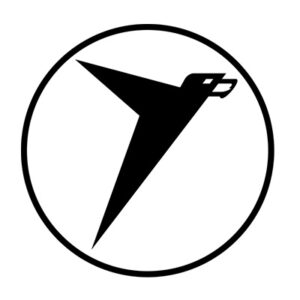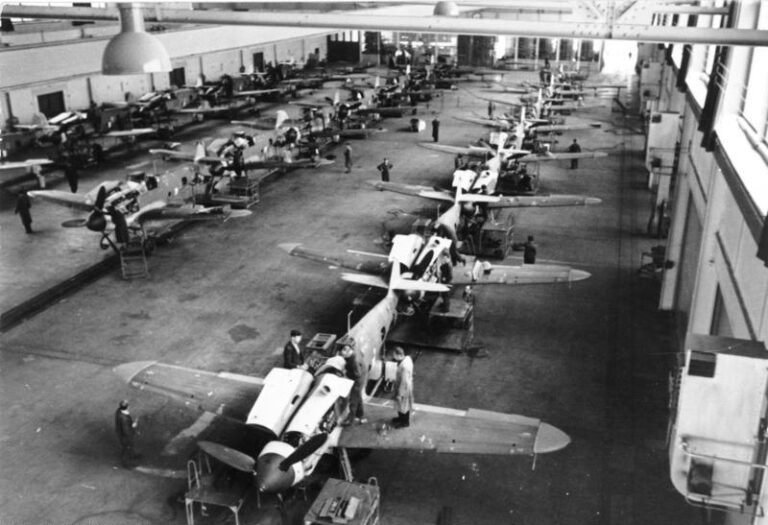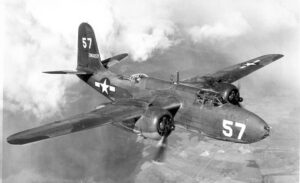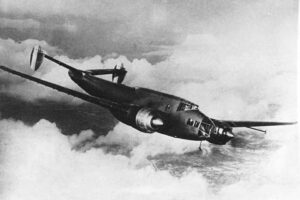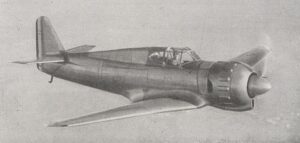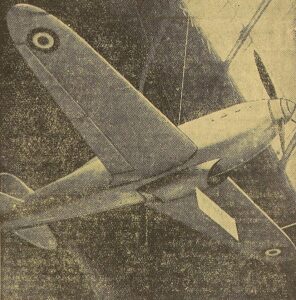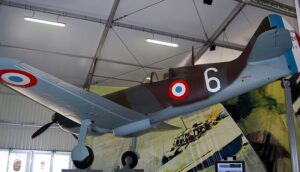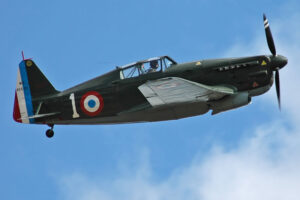Time Period: World War II
Country of Origin: Germany
Type: Fighter Aircraft
Manufacturer: Bayerische Flugzeugwerke (BFW), renamed Messerschmitt AG
Messerschmitt Bf 109 Aircraft Overview
German fighter planes from World War II, including the Messerschmitt Bf 109 and the Focke-Wulf Fw 190, formed the core of the Luftwaffe’s fighter force.
The Bf 109 entered operational service for the first time during the Spanish Civil War in 1937, and it remained in use in 1945, after the end of the Second World War. With an all-metal monocoque construction, a closed canopy, and retractable landing gear, it was one of the most technologically advanced fighters when it initially made its appearance. It was propelled by an inverted V12 liquid-cooled aero engine. Even though this was not the official German designation, several German aces and Allied pilots referred to it as the Me 109.
The History of the Messerschmitt Bf 109
The Messerschmitt Bf 109 was created by Robert Lusser and Willy Messerschmitt, who were employed with Bayerische Flugzeugwerke in the early to mid-1930s. Although later models were created to perform numerous functions, including bomber escort, fighter-bomber, day-, night-, all-weather fighter, ground-attack aircraft, and reconnaissance aircraft, it was originally designed as an interceptor.
It served various nations for many years after the war and was provided to several states during World War II. With a total of 33,984 airframes constructed from 1936 to April 1945, the Bf 109 is the fighter aircraft that has been produced the most in history. Slave labor was used in certain Bf 109 manufacture in Nazi concentration camps.
The Messerschmitt Bf 109 During WW2
Introduced in the mid-1930s, the Bf 109 was initially developed as a high-performance interceptor aircraft for the Luftwaffe, the German air force. Its sleek design, powerful engine, and advanced aerodynamics made it one of the most formidable fighters of its time. Throughout the war, the Bf 109 underwent numerous upgrades and variants to adapt to changing combat conditions and technological advancements.
For instance, one of the most famous variants of the Bf 109 was the Bf 109E, also known as the “Emil,” which featured improved armament and performance characteristics.
During the early stages of World War II, the Bf 109 achieved notable success in combat operations over Poland, France, and the Low Countries. It also played a significant role in the Battle of Britain, where it clashed with the Royal Air Force (RAF) during the intense aerial battles over the skies of England.
Despite facing increasingly advanced Allied aircraft, the Bf 109 remained a formidable adversary and continued to be a mainstay of the Luftwaffe’s fighter force until the end of the war.
Messerschmitt Bf 109 Specifications
- Crew: 1
- Length: 8.95 m (29 ft 4 in)
- Wingspan: 9.925 m (32 ft 7 in)
- Height: 2.6 m (8 ft 6 in)
- Wing area: 16.05 m2 (172.8 sq ft)
- Airfoil: NACA 2R1 14.2; tip: NACA 2R1 11.35
- Empty weight: 2,247 kg (4,954 lb)
- Gross weight: 3,148 kg (6,940 lb)
- Max takeoff weight: 3,400 kg (7,496 lb)
- Powerplant: 1 × Daimler-Benz DB 605A-1 V-12 inverted liquid-cooled piston engine 1,475 PS (1,455 hp; 1,085 kW)
- Propellers: 3-bladed VDM 9-12087, 3 m (9 ft 10 in) diameter light-alloy constant-speed propeller.
Messerschmitt Bf 109 Performance
- Maximum speed: 530 km/h (330 mph, 290 kn) at sea level. 588 km/h (365 mph; 317 kn) at 4,000 m (13,000 ft). 642 km/h (399 mph; 347 kn) at 6,300 m (20,700 ft). 622 km/h (386 mph; 336 kn) at 8,000 m (26,000 ft)
- Cruise speed: 590 km/h (370 mph, 320 kn) at 6,000 m (20,000 ft)
- Range: 880–1,144 km (547–711 mi, 475–618 nmi)
- Combat range: 440–572 km (273–355 mi, 238–309 nmi) 440-572 km to the front and back home
- Ferry range: 1,144–1,994 km (711–1,239 mi, 618–1,077 nmi) 1144 without and 1994 with droptank
- Service ceiling: 12,000 m (39,000 ft)
- Rate of climb: 20.1 m/s (3,960 ft/min)
- Wing loading: 196 kg/m2 (40 lb/sq ft)
- Power/mass: 0.344 kW/kg (0.209 hp/lb)
Messerschmitt Bf 109 Armament
- Guns:
- 2 × 13 mm (.51 in) synchronized MG 131 machine guns with 300 rpg
- 1 × 20 mm (.78 in) MG 151/20 cannon as centerline Motorkanone with 200 rpg or
- 1 x 30 mm (1.18 in) MK 108 cannon as centerline Motorkanone with 65 rpg (G-6/U4 variant)
- 2 × 20 mm MG 151/20 underwing cannon pods with 135 rpg (optional kit—Rüstsatz VI)
- Rockets: 2 × 21 cm (8 in) Wfr. Gr. 21 rockets (G-6 with BR21)
- Bombs: 1 × 250 kg (551 lb) bomb or 4 × 50 kg (110 lb) bombs or 1 × 300-litre (79 US gal) drop tank
Messerschmitt Bf 109 Image Gallery
More Messerschmitt Aircraft
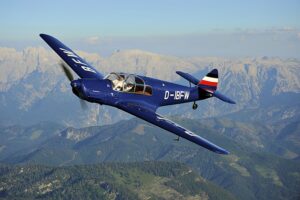
Messerschmitt Bf 108 Taifun
The Messerschmitt Bf 108 was a German single-engine aircraft developed by Bayerische Flugzeugwerke in the 1930s.
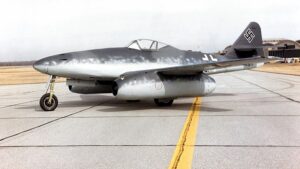
Messerschmitt Me 262 Sturmvogel
The Messerschmitt Me 262 Sturmvogel is a fighter bomber aircraft and the world’s first jet-powered fighter aircraft.
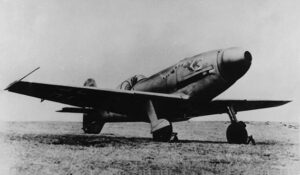
Messerschmitt Me 209
The Messerschmitt Me 209 was a German single-engine racing aircraft designed to break speed records and used as a propaganda tool in WW2.
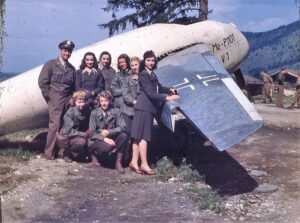
Messerschmitt P.1101
The Messerschmitt P.1101 was a single-seat jet fighter developed by Messerschmitt for the Third Reich during the Second World War.
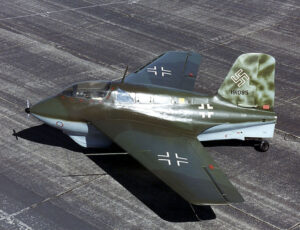
Messerschmitt Me 163 Komet
The Messerschmitt Me 163 Komet was a German rocket-powered interceptor aircraft primarily used by the Luftwaffe in the 1940s.
More Luftwaffe Aircraft
The Luftwaffe, the German air force during World War II, fielded a diverse range of aircraft that played critical roles in the conflict. These aircraft encompassed fighters, bombers, reconnaissance planes, transport aircraft, and more. Explore others:
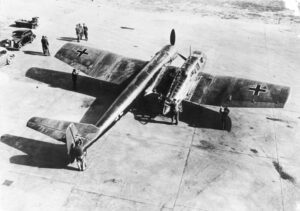
Blohm & Voss BV 141
The Blohm & Voss BV 141 (originally known as the Ha 141) was an asymmetrical World War II German tactical reconnaissance aircraft.
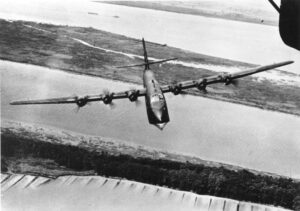
Blohm & Voss BV 222 Wiking
The Blohm & Voss BV 222 Wiking was a large six-engined German flying boat originally developed during the late 1930s as a commercial venture.
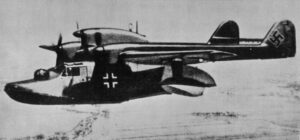
Blohm & Voss BV 138 Seedrache
The Blohm & Voss BV 138 Seedrache was a trimotor flying boat used by the Luftwaffe for seaborne maritime patrol and naval reconnaissance.
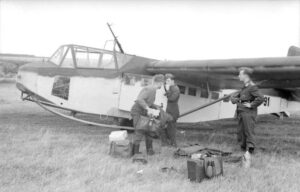
DFS 230
The DFS 230 was a German transport glider developed in 1933 and operated by the Luftwaffe during World War II.
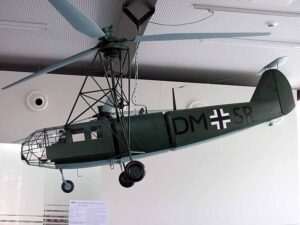
Focke-Achgelis Fa 223 Drache
The Focke-Achgelis Fa 223 was a helicopter developed by Germany during World War II and the first one to attain production status.


